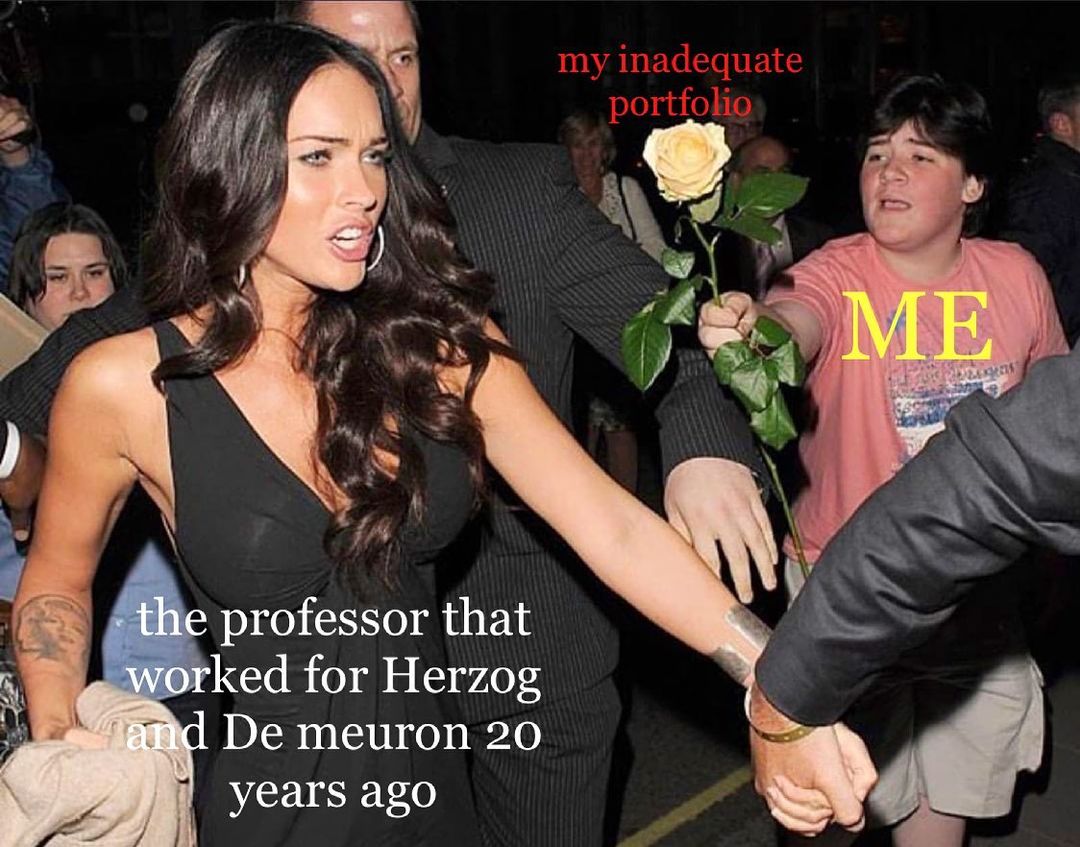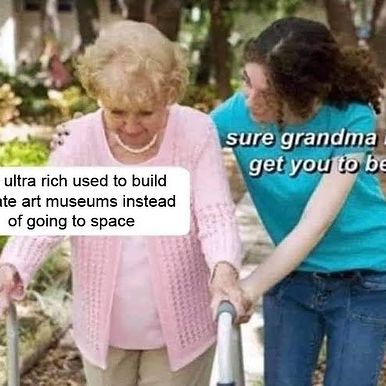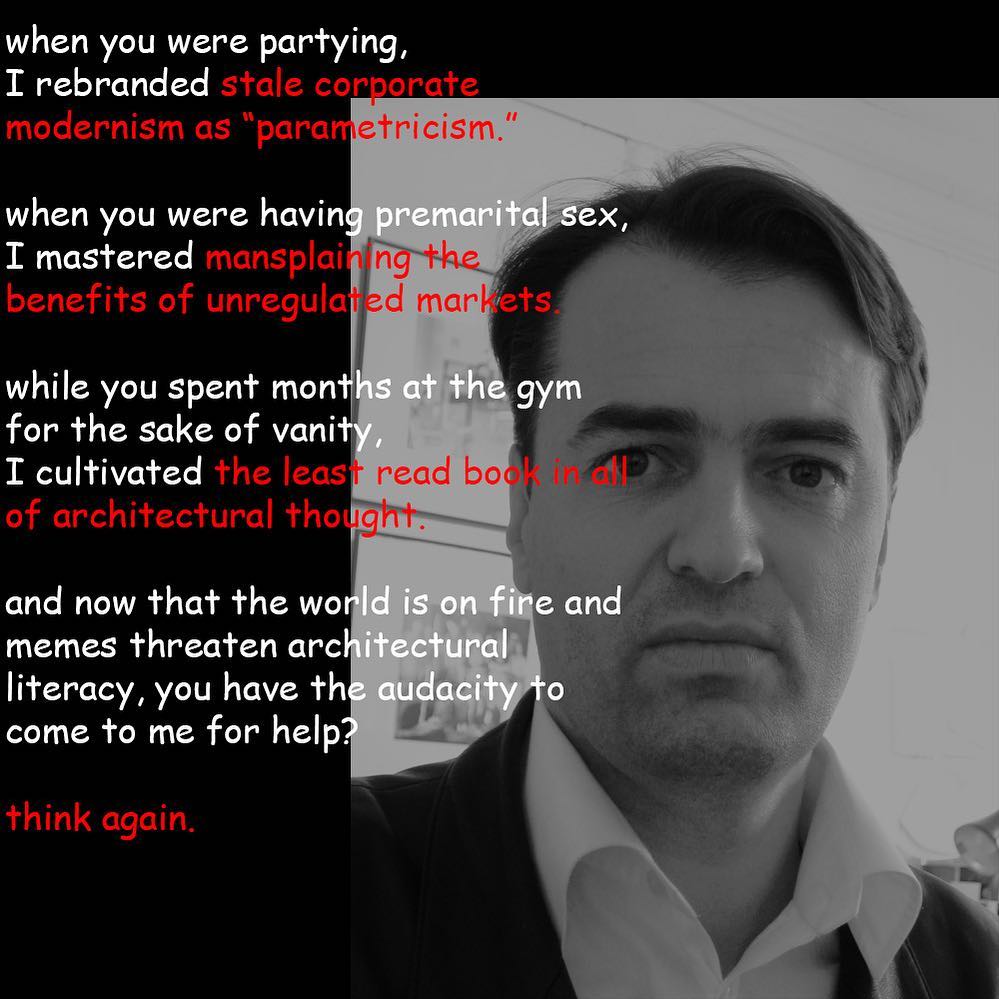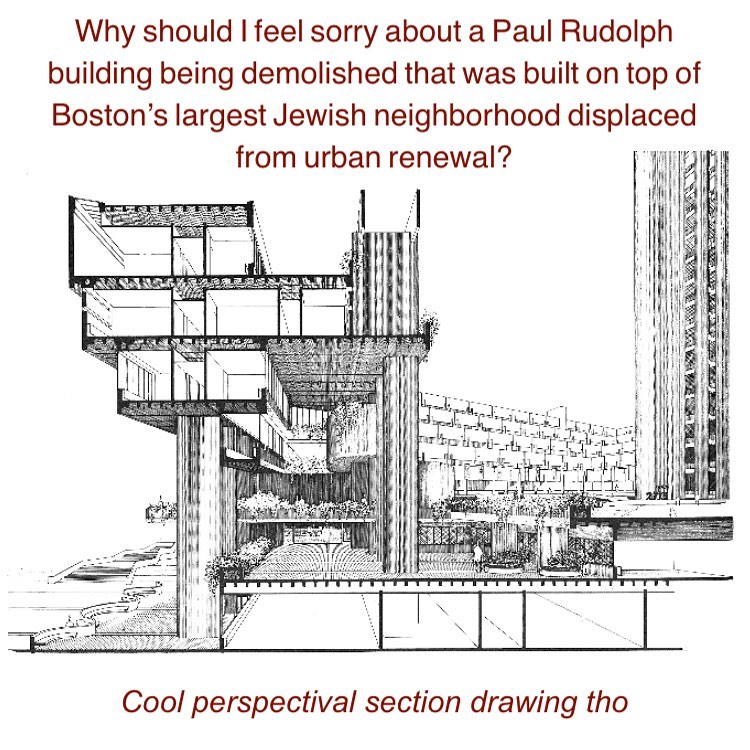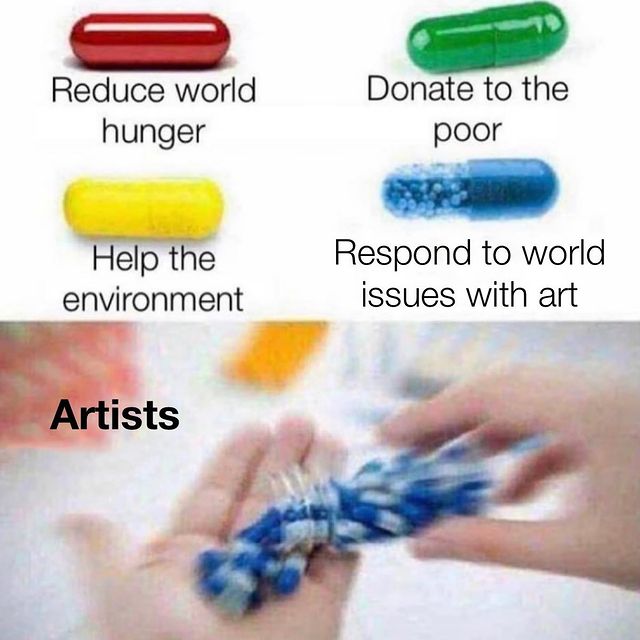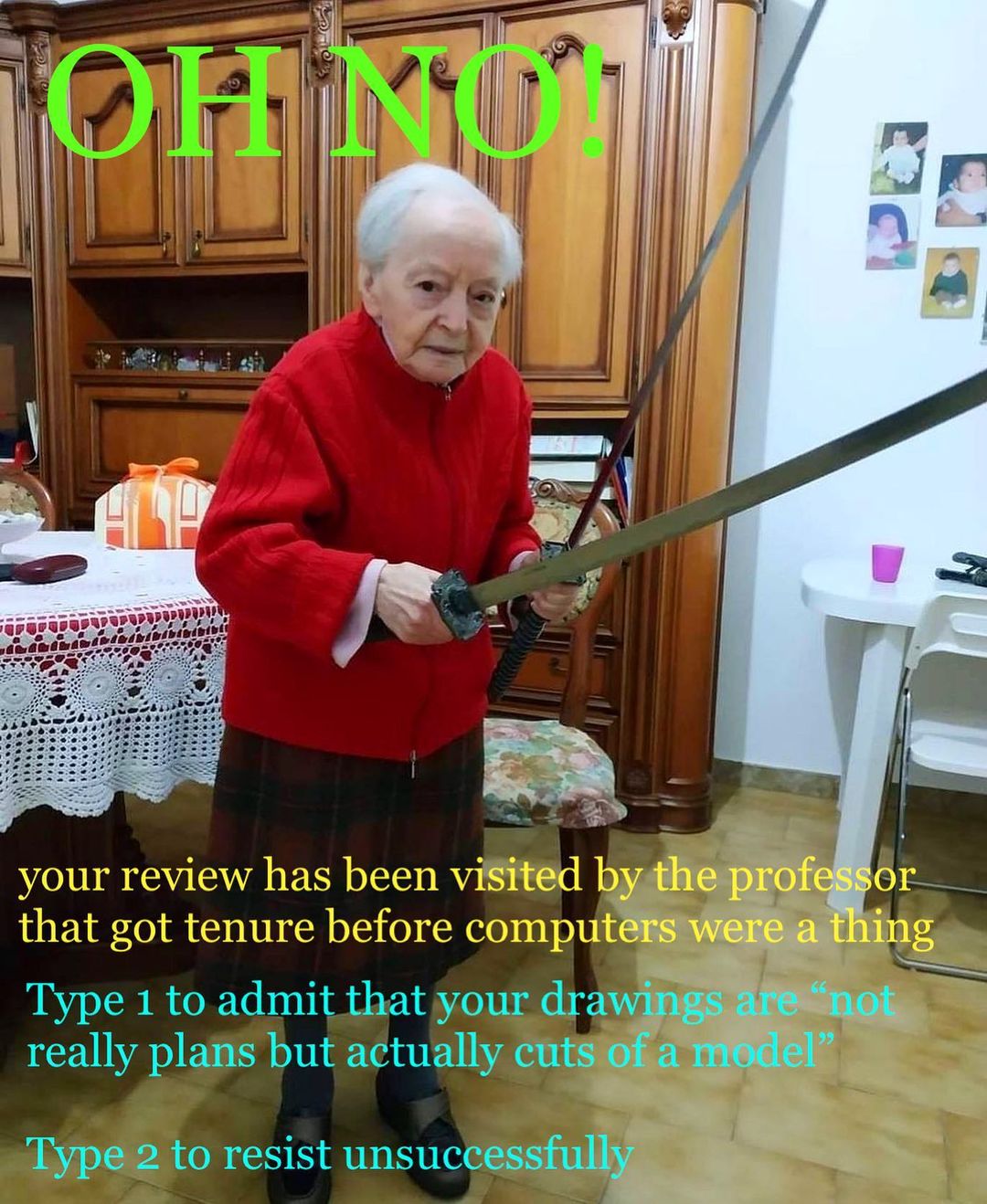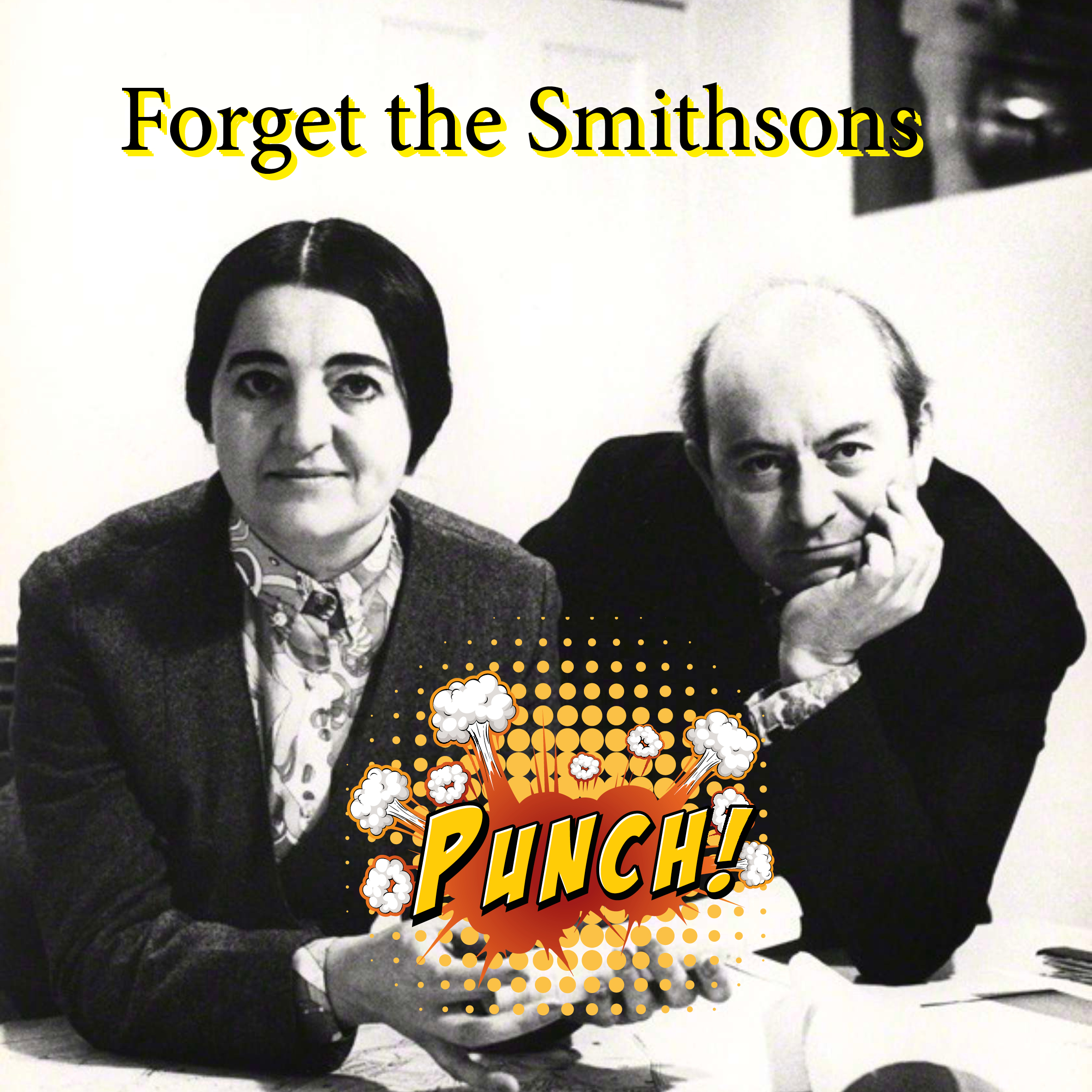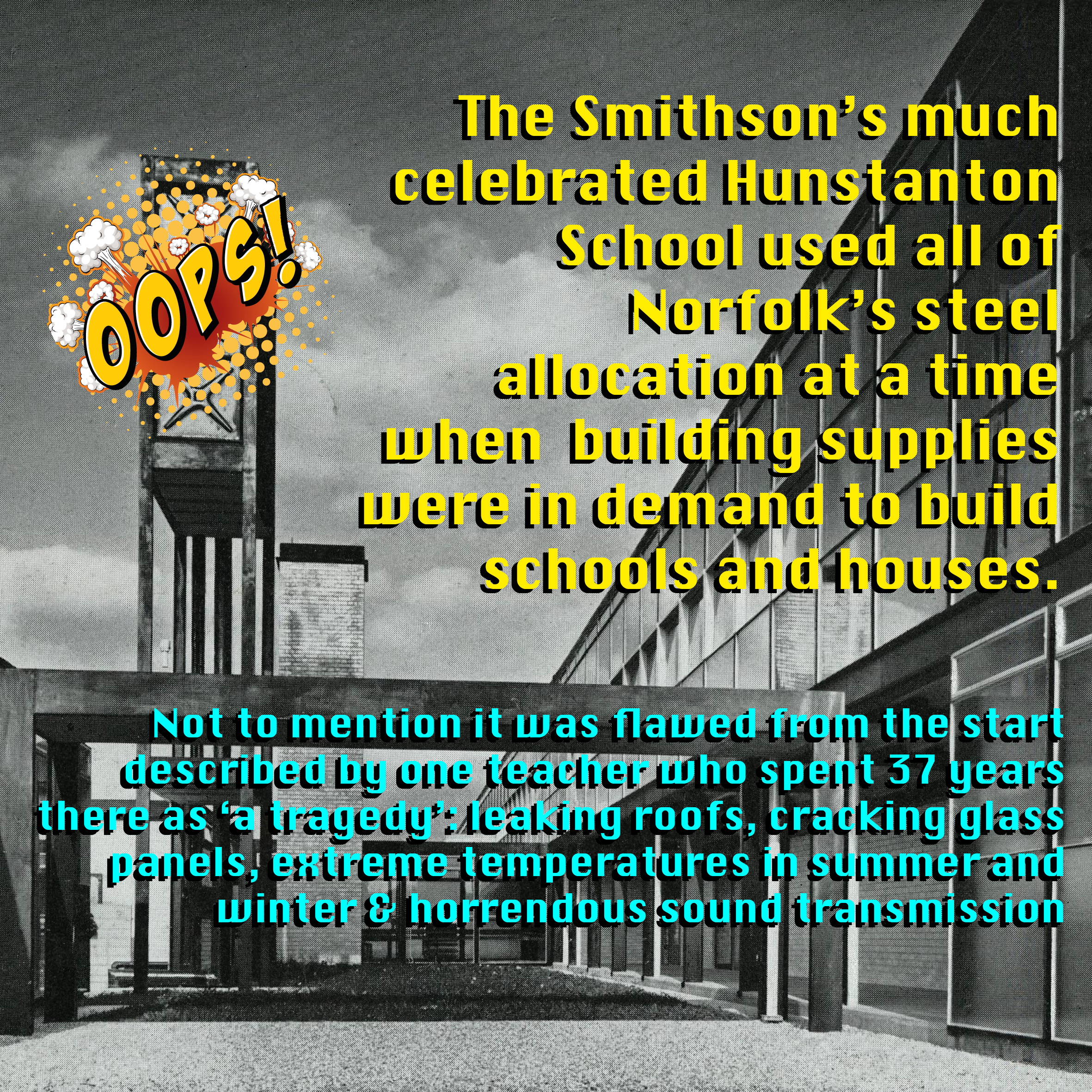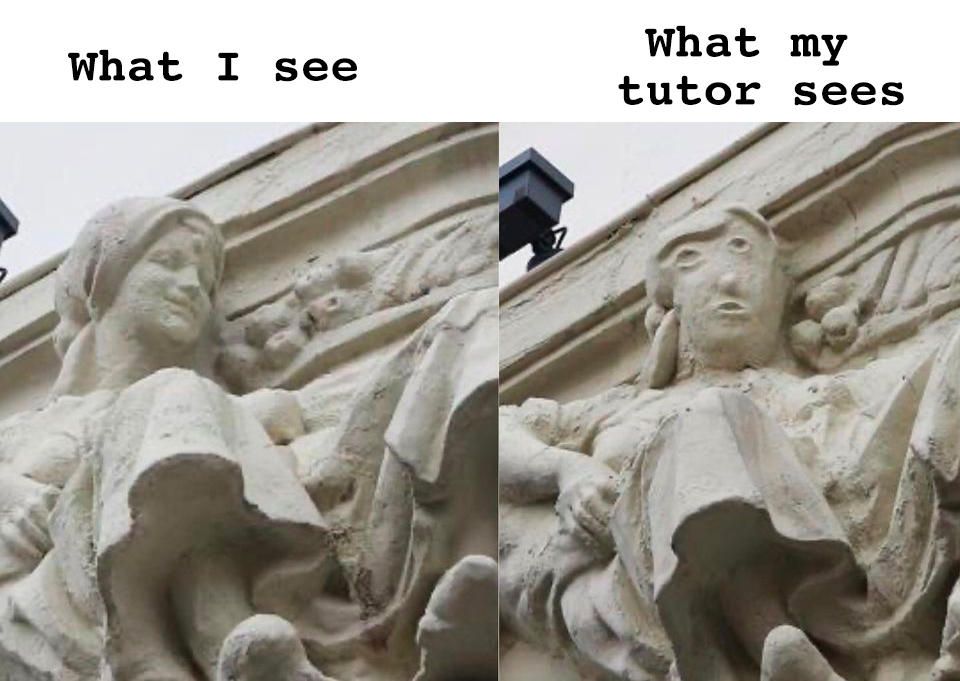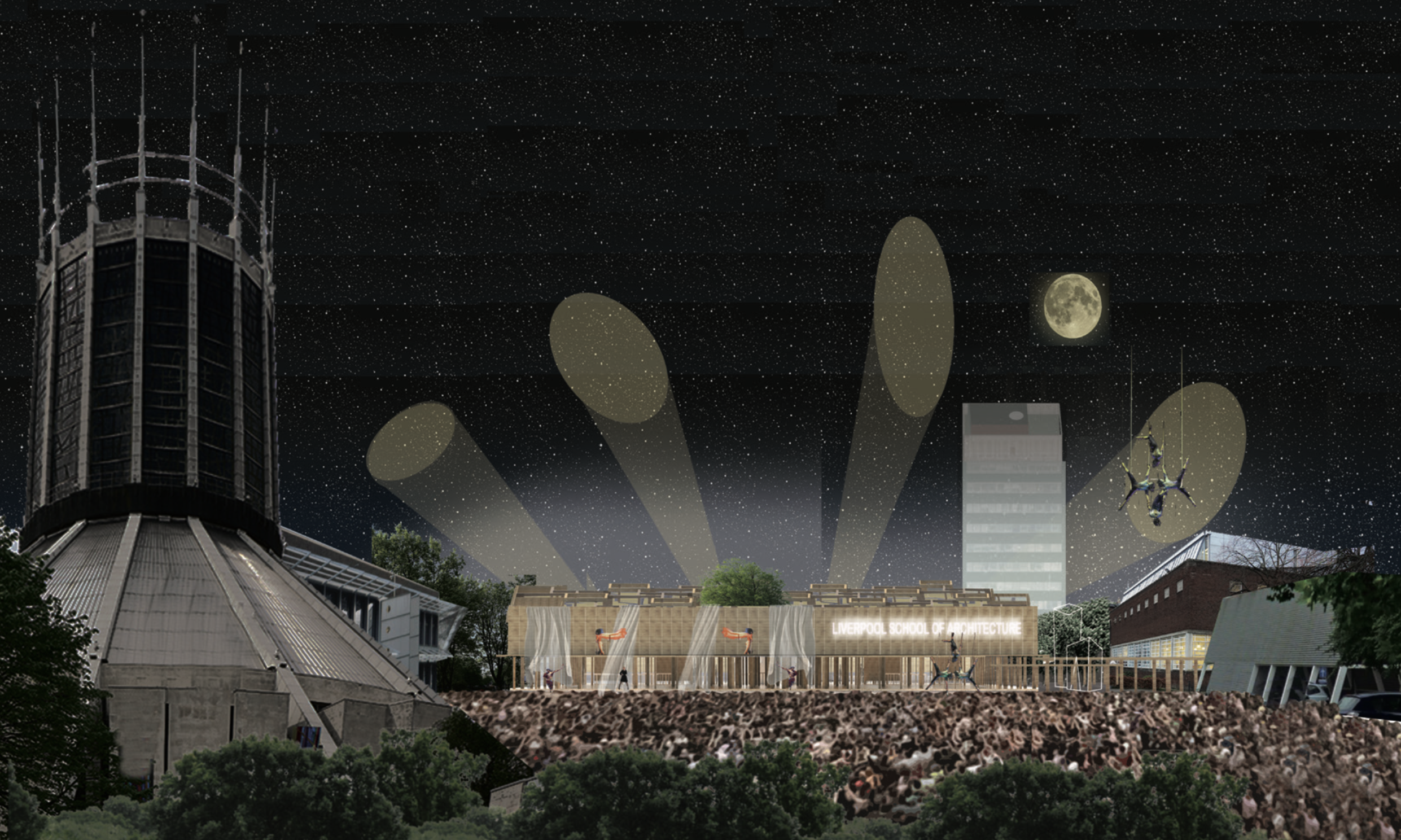- Words by Jason Sayer
The internet is a strange place. If asked what ‘internet culture’ is, most of us would have a half-baked idea of what that meant, but nothing comprehensive – and it’s something even more alien to those who weren’t born with the world wide web at their fingertips. Yet, as the internet has grown, it has become increasingly more accessible over the past 20 years. ‘Internet culture’ has expanded with it, spawning many subcultures along the way and one of those subcultures is ‘meme culture’. Memes have become a potent force within the internet: they are funny, offensive, didactic, silly, surreal, sometimes all of those at once, and more. They have been used by state agencies to influence public political opinion and perhaps even influenced elections. And they’re influencing the minds of young architects and architecture students, too.
There are a number of ‘meme pages’ dedicated to architecture which today have a significant following, often in the tens of thousands. On Instagram there is @Dank.Lloyd.Wright, @oh.em.ayy, @engineeringmemesguy, @blank_gehry, @sssscavvvv, to name a few, and their content is seen by tens of, maybe hundreds of thousands of people, predominantly in the English-speaking internet world, and predominantly based in Europe and North America. (Outside that, @paulomendesdoarrocha posts memes in Portuguese to followers based mostly in Brazil and there are other minor pages too, but too many to list here.) A quick survey among LSA students revealed almost all with an Instagram account followed at least one of these accounts. The same, this author is told, is true for architecture schools across the UK and US.
How did we get here? And what are the ramifications of a large chunk of young architects and architecture students absorbing all this content? Before we dive headfirst into this small-but-rapidly-growing corner of the internet, we need to understand what memes are and how they gained such influence.
What is a meme?
A meme is essentially a cartoon on the internet. Memes are mostly pictures or collages with text overlaid on them. The images infer emotion, typically referencing something else, while the text is often the punchline, of sorts, to a joke. See the examples above.
Where did memes come from?
Not the internet. It was Richard Dawkins who introduced the word ‘meme’ in 1976 (the work deriving from the Greek mīmēma, meaning ‘imitated’). An evolutionary biologist, Dawkins used the term to head a chapter in his book, The Selfish Gene, in which he described a meme as a unit of cultural information spread by imitation. ‘We imitate because we want to belong’, he said. Hence, anything that can be fashionable or redefined according to taste is, in a way, a meme. Dr Susan Blackmore, a psychologist and author of The Meme Machine argues that this includes chairs, trousers and hairstyles etc. To Dr Blackmore, these things exist in their form today because humans have copied them and are the winners in an evolutionary battle. This notion of object evolution is present in the design world and can be traced back to the 1920s when French theorists – including Le Corbusier – believed that standard objects, such as the bowl or a wine glass, for example, had been perfected over centuries through a form of natural selection and could not be bettered.
Sometime after Dawkins first postulated the notion of a meme, an article titled ‘Meme, Counter-meme’, appeared in Wired magazine in 1994, relating memes to an emerging culture among internet users. The article noted a phenomenon known as Godwin’s Law, which asserts that as an ‘online discussion grows longer, the probability of a comparison involving Nazis or Hitler becomes more likely’. It went on: ‘A “meme”, of course, is an idea that functions in a mind the same way a gene or virus functions in the body’, adding: ‘And an infectious idea (call it a “viral meme”) may leap from mind to mind, much as viruses leap from body to body.’
With that, the notion of going viral had been formally introduced. And it’s eerily fitting – but not at all surprising – that memes have truly gone viral during an actual pandemic, a time when whole populations are forced to stay at home with almost all entertainment coming from the internet. On that note, let’s look at what is possibly the most viral meme to date — Pepe the Frog, which took the internet by storm.
The rise and fall of Pepe the frog
On 16 August 2016, during a campaign speech by Hillary Clinton, an audience member shouted something peculiar: ‘Pepe!’ (pronounced Peh-pay). This, believe it or not, is a reference to a cartoon frog, internet-famous for looking forlorn and for saying ‘feels good man’. To many, this nonsensical call-out barely registered, but it was proof to some that internet memes could exist outside the world wide web.
Pepe was first drawn in 2005 by American cartoonist, Matt Furie, for his comic book, Boy’s Club. Matt was posting to his Myspace blog but back then, Pepe gained minimal online notoriety. However, in 2008, Pepe appeared on the internet forum known as 4chan and from there, Pepe’s fame spiralled. This was due to two key reasons.
First, some 4chan users resonated with Pepe’s catchphrase, ‘feels good man’, famously said while peeing at a urinal with his trousers all the way down. The phrase signified that Pepe didn’t care what others thought, he was a loser and he was owning it. ‘Feels good man’ — the name of a brilliant documentary on Pepe the Frog — was a phrase that could be applied to other moments of awkwardness or embarrassment, which users did, adapting the same cartoon format made by Furie.
Second, 4chan as a medium is built for viral media. The website, which has a functional, bare-bones aesthetic, created the fast-paced nature of meme culture. To post to 4chan you have to post a picture or text. However, when 4chan started, it had limited server space, so old, unpopular images had to be deleted to make space for new ones. If images gained a lot of engagement, they would stay up on the site, but if they fell flat and users got bored of them, they could be deleted very quickly, having a lifespan on the website of an average of just over nine minutes. If an image outlived this, then there was a chance it would go viral; go viral, or die.
All this alludes to the aesthetic of memes as well. They look cheap, easily made, rough and ready – and that’s the point, memes aren’t supposed to be slick or glamorous. They’re not made by professional graphic designers, they’re made by a ham-fisted millennial while they’re supposed to be working, or at 2am on a Tuesday.
Other forums like 4chan, such as Reddit, and even Facebook and Instagram to an extent, emulate this content formula. With regards to the latter two, instead of deleting content, they simply just don’t show it to you. This wasn’t always the case. Instagram prior to 2016 displayed content to users in chronological accordance to when it was posted. Scrolling through Instagram was essentially scrolling through time. But that began to change when Facebook acquired it in 2012, and four years later, fully rolled out a change in the app’s algorithm which determined what posts were shown to users, instead, deciding for you which posts it felt you would like, or rather, posts others were liking a lot at the time.
This brings us neatly back 2016, the US election and our dear friend, Pepe. The internet frog was enjoying online fame, until, that is, it was co-opted by an Alt-Right faction of Trump supporters on 4chan, spilling out onto Facebook and Twitter, with Pepe being edited by people to be a member of the KKK, Hitler, to say anti-Semitic or racist things, and don anti-Semitic tropes. Pepe also became synonymous with the Trump campaign, the former US President even tweeting an image of Pepe edited to look like him. So, when that audience member in August 2016 shouted ‘Pepe!’ at a Clinton rally, it signified how a dark corner of the online world can creep into reality. Pepe’s fall from grace was completed when in September 2016, the frog, once an innocent cartoon, was added to the Anti-Defamation League’s database as an official hate symbol.
Our generation can understand very complex situations, summarised in memes which have a lot of information that you get very quickly
This demise (yet rise in fame) was fuelled by platforms and algorithms that prioritised popularity over everything else. Has this changed today? No. Most recently, the YouTube channel, Right Wing Watch, which dedicates itself to exposing and debunking right-wing conspiracies and hate speech, was banned by the platform. Such a move encapsulates the motive for media companies who prefer popular, controversial, share-able, and clickable content – content that drives the most ad revenue.
Since 2016, meme culture has expanded beyond niche online cubbyholes and found its way into the mainstream. Once upon a time, unless you specifically sought out meme accounts, Instagram was not the place for such content. Yet today, the platform which has 29 million users in the United Kingdom, is awash with memes, filled with meme pages like the architecture ones mentioned at the start of this article.
Indeed, the cultural potency of memes has grown as the medium has matured.
‘Our generation can understand very complex situations, summarised in memes which have a lot of information that you get very quickly’, says Rhiarna Dhaliwal, member of design collective Xcessive Aesthetics who are well-versed in the aesthetics birthed by online and meme culture.
‘It’s a new development in language, a short-hand for different ideas and concepts. Meme pages overlay older, common memes and use that as another way to communicate. It feels like lots of in jokes all happening at once’, adds Betty Owoo, an LSA graduate. ‘You still have to work to know all the references, young people have still taken time to get these references. There’s a universality to them, it’s a worldwide language as it’s pictorial but it can be adopted by other spoken languages.’
Memes have often been, and still are, derided by some – seen as silly, irreverent and a joke not worth taking seriously, even after Pepe the Frog’s foray into the US presidential election. But they are the cultural currency of a generation who are more interested in the layered meanings and references within memes, than they are with the references embedded in highbrow, more conventional forms of art.
‘When someone says “they don’t get art” can we blame them for not following the narratives and minor alterations to an artist’s work over their career? Why should they care when Bridget Riley, for example, started using colour in her work?’ argues American artist Brad Troemel. ‘It’s not that these unwashed masses don’t understand art, it’s just they can’t be bothered to. Art’s impossibly complicated network of gatekeeping reads as a pathetic attempt at self-importance to everyone who’s been able to access any information they want whenever they want their entire lives. Furthermore, art’s obsession with the canvas is incredibly outdated and no longer relevant.’
Like Pepe, architecture memes have had real-world ramifications too. Not long ago, memes regarding unpaid internships helped amplify a campaign started by designer Adam Nathaniel Furman against exploitative labour practices in the architecture industry. Now it seems such unpaid positions are rare, particularly in the UK, as studios fear the online repercussion, even more so now as pages such as Future Architects Front (FAF) dial up the campaign for architectural worker’s rights, again using memes to gain online momentum.
Reading, fast and slow
Beyond this, architecture memes are playing a more direct educational role as well. Along with jokes, they’re communicating progressive ideas on greenwashing, social housing, sustainable practices, student/studio culture, hostile architecture and inclusive planning, to name a few. They also highlight failings of the industry, like architects who side with right-wing despots, urbanism that is hostile to rough sleepers; and on the flipside, highlight work that counters this and shed light on unsung, typically female and/or non-white heroes, such as architect Mary Medd, among many others.
Memes also encourage a quick reading of architecture. Dezeen and ArchDaily were lambasted in their infancy for promoting this way of reading architecture, derided for being too image-heavy and light on text (and then for being too light on critical text). Memes in a way are the evolution of this and indeed follow Marshall McLuhan’s notion that TV would lead to hieroglyphic thinking (think signs as language: emojis, etc.). Reduced to their basics, memes are just one-liners overlaid onto images and collages — the audience gets the message in an instant; breathing heavily out their nose momentarily, and then scrolling onwards into the virtual abyss.
It’s easy to say this is bad for architecture: reducing a building to a quick hot-take being disastrous for those who want to gain a comprehensive understanding of something that has taken years, maybe even decades, to be realised, and remained built for even longer. But memes aren’t there to fill that gap; they’re a complementary rebuke to a building study or an architectural essay, for example. The problem arises when people don’t have access to both; content for the Architects’ Journal and the Architectural Review, the two dominant architecture publications in the UK, sits behind a paywall. And this is perhaps why being able to digest such information through memes, so quickly, is the medium’s greatest asset — instant information for all.
‘These [meme] accounts have a curatorial aspect to them. They may post a book, like from Aldo van Eyck, which costs £900 and now we get access to it. I might not agree with their taste, but they can be useful’, Kiril Georgiev, current LSA Second Year told Citizen.
‘Meme pages show you different ways of reading architectural theory’, says Carlos Tolosa Tejedor, another LSA Second Year student. ‘But you have to have prior knowledge to understand this. It’s satire and populist architectural theory, essentially.’
Architectural satire of course is nothing new. Cartoonist Louis Hellman is arguably most well-known by older generations for his witty jabs at architects and the architecture community. Dutch office OMA also produced satirical content, as did online blog pages from the mid-2000s, like Mockitecture. However, memes being disseminated on social media has allowed this content, which is often critical in nature, to be consumed by anyone with an internet connection, no longer gatekept by The Architects’ Journal, The Architectural Review or Private Eye – Hellman’s typical stomping grounds.
Most meme pages are anonymous and so lack accountability – a feature of the internet’s supposed Golden Age (2000–10) where real life identities were eschewed in favour of usernames. That is, until Facebook stepped in. Meme pages, however, do hold others, especially those in power, to a high standard of accountability, as evidenced in Furman and FAF’s campaigns.
Meme pages, especially those on Instagram, are chaotic in nature, too. Seldom is there logic to how or when they post, and content isn’t formally catalogued, except in an online feed.
Memes, for now, are cool. Their downfall will be when corporations clock on and attempt to tap into the medium’s success. This is already happening, but so far, it’s so blatant that ‘authentic’ memes have stayed relevant. And if the evolution of memes tells us anything, it’s that some will adapt or subvert them further, generating new means of communication in the process. The medium of social media could also be another stumbling block, particularly as people become acutely aware of its potential detrimental effects on our mental health. If that happens, memes will have to find a new host to go viral.
